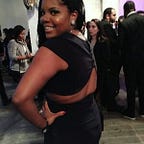Normal is subjective. Normal is always changing. Normal doesn’t exist and therefore neither does a new normal.
When COVID entered the American consciousness in March, most people assumed that after a few weeks of major adjustments, COVID would be defeated and life would go on with this illness being nothing more than a minor inconvenience.
Somewhere around month two and three of the stay-at-home orders, we as a collective society began to come to the painful realization that COVID was here to stay for the foreseeable future. At the same time, organizations and individuals alike began to wonder what it would be like to resume life (because at some point life has to go on) even in the midst of battling a pandemic. In preparation for a reopening, messages stressing the “new normal” began to appear everywhere, outlining how certain workplaces, restaurants and shops would operate moving forward.
I don’t find pleasure in being the one to communicate bad news even though it is a function of my job. With that being said, “new normal” is not a thing. In fact, it’s an oxymoron. How can something be new while simultaneously being normal? Moreover, be using the phrase new normal, we are implying and giving credence to the idea that what is happening now is part of a natural evolution. It’s not.
However, this rush to return to life pre-COVID with a few modifications is disingenuous, doesn’t allow us to collectively mourn our losses, and it keeps us from imagining and innovating something new, something better, a “what’s next.”
In the United States alone, we have over 5 million confirmed cases of COVID, we’re rapidly approaching 200,000 COVID-related deaths, and millions of people are out of work as a result of the way this illness has reshaped our economy. There is nothing normal about this pandemic.
I understand the desire to have something appear normal in all of this. I have experienced it in my own life as my eight-year-old son would pack a book bag and lunch to bring to his virtual classroom. For him, he needed something that felt like school, even if it was just the dining room table.
However, this rush to return to life pre-COVID with a few modifications is disingenuous, doesn’t allow us to collectively mourn our losses, and it keeps us from imagining and innovating something new, something better, a “what’s next.”
Despite the various challenges COVID has placed on nearly every aspect of society, it has also made some things better.
Communication between employers and employees is up. As many businesses had pivot to a remote workforce on short notice, thinking through how to communicate to employees before and during the transition became critical to the overall success. Without the face-to-face interaction so many leaders relied on, communicating expectations, progression towards goals, and maintaining or building company culture had to be rethought. The result has been that many employees feel more engaged and connected to their workplace because the situation necessitates consistent communication and feedback.
COVID has also taken the cool, yet somewhat elusive, concept of flexibility in the workplace and made it something tangible and recognizable to everyone. Prior to COVID, I would venture to say most people probably considered the ability to come in at a time other than 8am flexibility. What this pandemic has revealed is flexibility isn’t only needed in start and end times, but it also needed when discussing workloads and project deadlines.
Still, there is so much more that we can create and rethink as a result of COVID, if we give ourselves permission. How much better could we make schools, workplaces, communities and so much better and accessible as a result of the lessons COVID has taught us. How might we also strengthen our business models to withstand the unimaginable?
Normal is subjective. Normal is always changing. Normal doesn’t exist and therefore neither does a new normal. What is available is the concept of what’s next. Creatively and boldly looking to the future while gleaning lessons from the present.
